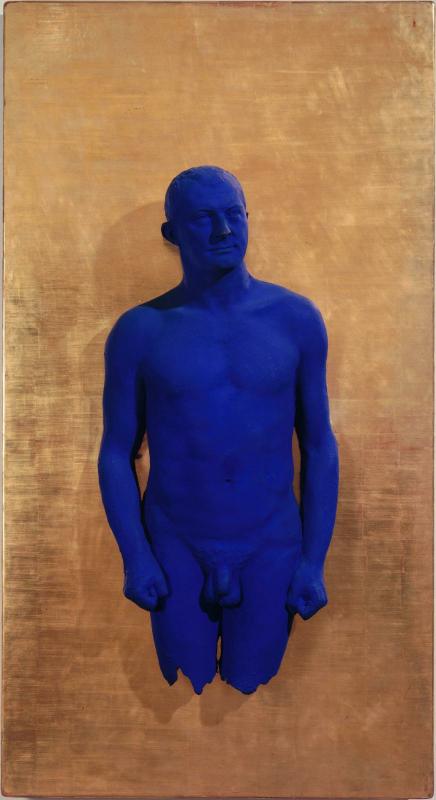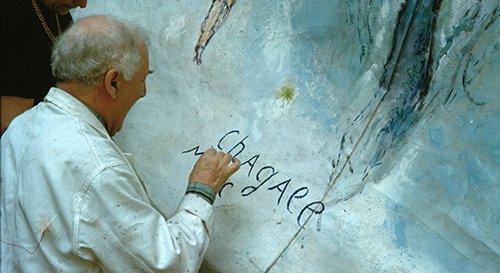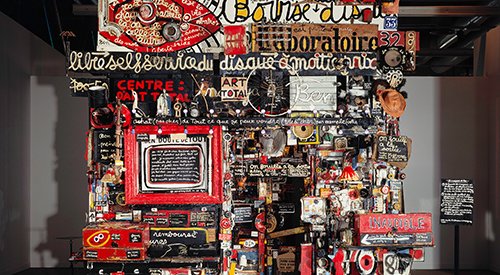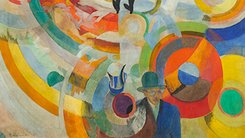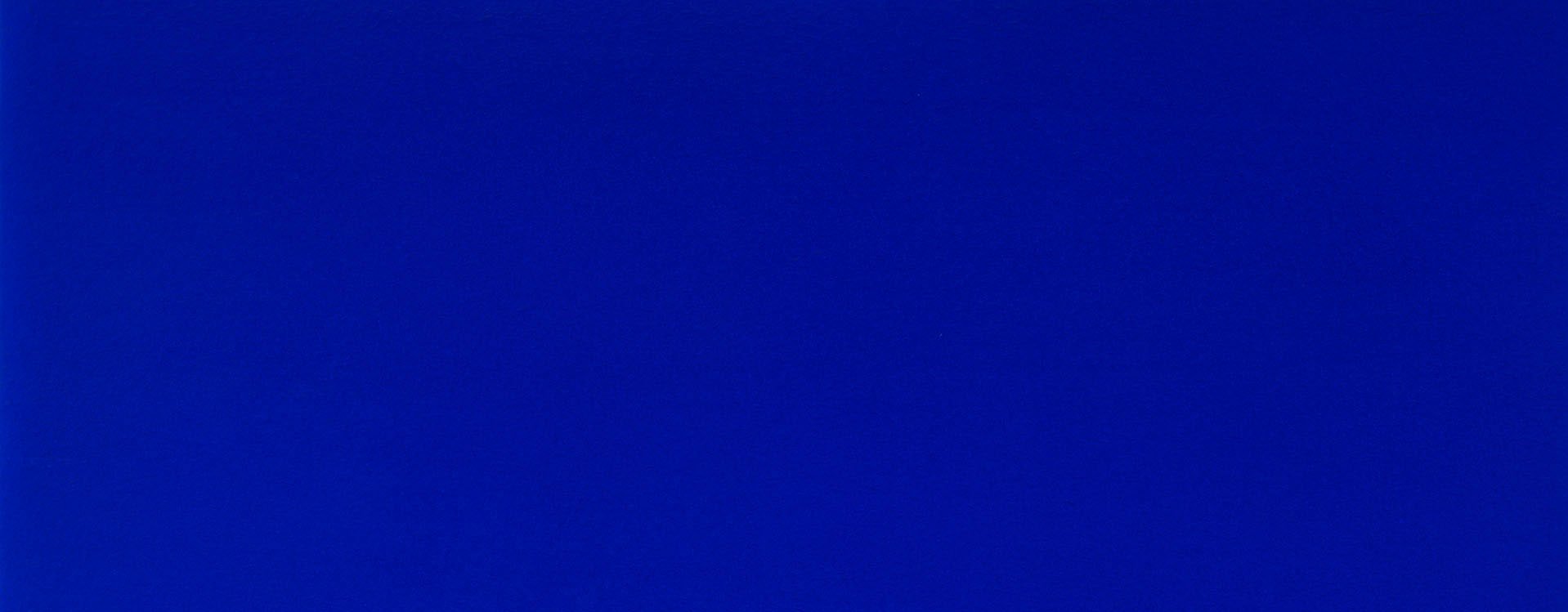
The Untold Story of the International Klein Blue (IKB) of Yves Klein
In January 1957, Yves Klein presented “Proposte monocrome, epoca blu” at the Apollinaire Gallery in Milan: an exhibition of eleven identical canvases (78 × 56 cm), each coated in ultramarine pigment—monochromes. Suspended about twenty centimetres away from the wall rather than hung, the paintings appeared to float in space. It was at this exhibition that the public discovered the ultramarine blue that would later become the artist’s trademark: ‘International Klein Blue’, or IKB. For Klein, blue carried a unique sensitivity, and served as a vehicle for the passage from the material to the immaterial: “Blue has no dimensions, it is beyond dimensions,” he declared.
Blue has no dimensions, it is beyond dimensions.
Yves Klein
Yves Klein was captivated by the blue of the sky—a reality he perceived as immaterial and sought to make his own. In the “Chelsea Hotel Manifesto”, written in New York in 1961, he recounted: “As I lay on the beach in Nice, I began to feel a hatred for the birds flying to and fro in my beautiful cloudless blue sky, because they were trying to pierce holes in the greatest and most beautiful of all my works.”
In his pursuit of pure, luminous blue, the artist sought a way to preserve the intensity of raw pigment in his monochromes. Traditional binders dulled the colour upon drying, so he turned to Édouard Adam, a renowned colour merchant in the Montparnasse district of Paris. After experimenting with various solutions, Klein settled on a synthetic resin—Rhodopas M—developed by the Rhône-Poulenc company. Applied with a roller to avoid any texture, the resin bonded the pigment without altering its brilliance, producing a velvety surface that absorbed the viewer’s gaze. With their rounded edges and slight projection from the wall, the monochromes gave the illusion of levitation.
In his 1960 text “L’aventure monochrome: l’épopée monochrome”, Yves Klein reflected on the Milan installation: “This exhibition consisted of about ten dark ultramarine blue paintings, all rigorously identical in tone, value, proportions, and dimensions. […] Each of these blue propositions, identical in appearance, was nonetheless perceived by the public as entirely different from the others. Viewers moved from one to the next as they wished, instantly entering into a state of contemplation within the worlds of blue. Yet each blue world, though painted in the same blue and with the same technique, revealed itself to possess a distinct essence and atmosphere; none resembled the other, just as pictorial or poetic moments never resemble one another.”
On May 19, 1960, Yves Klein registered the IKB process with France’s National Institute of Industrial Property (INPI), under envelope Soleau no. 63471. Contrary to popular belief, Klein did not patent the colour itself—under French law, a colour cannot be owned—but rather the technique. What made IKB original was the specific combination of ultramarine pigment with the Rhodopas M binder. As a shade of blue, IKB is thus not the exclusive ‘property’ of Klein or his heirs, and can legally be used by other artists or creators.
Contrary to popular belief, Klein did not patent the colour itself—under French law, a colour cannot be owned—but rather the technique.
In 2014, British artist Anish Kapoor sparked controversy when he secured exclusive artistic rights to ‘Vantablack’, a black so dark it absorbs over 99.9% of light. Developed by the British firm Surrey NanoSystems, Vantablack has a refractive index close to that of air. Unlike IKB—which remains freely accessible as a hue, even if Klein’s binder technique is protected—Vantablack is a patented industrial material. It is not a simple pigment, but a substance composed of vertically aligned carbon nanotubes packed tightly together.
IKB became Klein’s signature, earning him international acclaim. He employed it in numerous works, notably in his famous Anthropometries, in which nude models, transformed into ‘living paintbrushes’, left imprints of their bodies on canvas. In 1962, Yves Klein died of a heart attack. He was 34 years old. ◼
Related articles
In the calendar
Yves Klein, IKB 3, Monochrome bleu (1960)
© Succession Yves Klein c/o Adagp Paris
© Centre Pompidou

